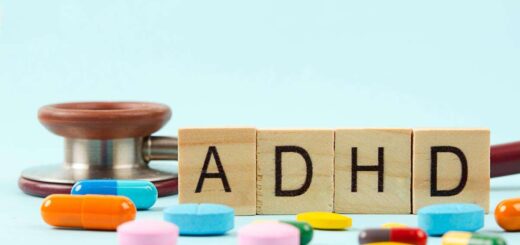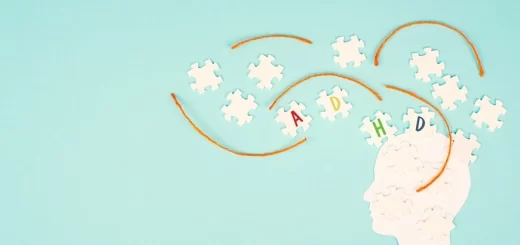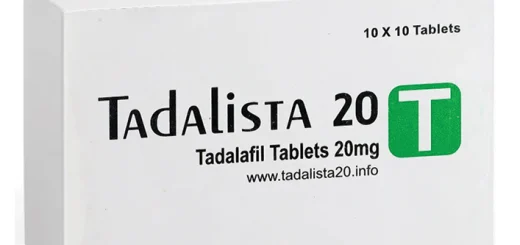ADHD vs ADD: Understanding the Differences and Similarities

ADHD is attention-deficit/hyperactive disorder, and ADD is attention deficit disorder. They are the most common terms that are used to address the attention deficit problem in a person. In this article, we aim to provide detailed information about the similarities and differences between ADHD and ADD. It also helps a person understand this mental issue in depth. Both disorders have a common core problem, which is attention difficulties, hyperactivity, and impulsivity.
ADD is an older term that is used to address attention challenges. But now the new term, ADHD, includes hyperactivity. Sometimes a person notices that they get easily distracted by things so this might be a chance of ADHD or ADD. This article explains all the details related to these two health conditions and makes it easier for a person to understand and solve attention-related challenges.
What is ADHD?
Attention deficit hyperactivity disorder is a brain condition that is very common nowadays and it can show in children and adults as well. It is shown that a long-lasting pattern of not paying attention to one thing, impulsivity, and hyperactivity can affect various parts of daily life. A person who is suffering from ADHD struggles with keeping their attention on one task, organizing activities, or maintaining tasks. It affects a person’s academic, occupational, and social settings. This disorder includes symptoms like forgetfulness, getting easily distracted, and having trouble completing one task that they started. It also has some other symptoms, like feeling restless, making a rapid decision without thinking, and having a hard time waiting for one’s turn. Sometimes the combined symptoms can also be seen in a person.
ADHD is a bit of a difficult condition that comes in different forms. It can affect more than just a person’s attention. It can also affect the ability of a person to control their emotions and decision-making abilities. Even though no one knows what the main cause of ADHD is, eventually they believe that genetic, environmental, and neurological factors may lead to this problem. So if you want to effectively treat ADHD and improve mental health, then it’s important to consult with your GP and get a solution for this as soon as possible.
What is ADD?
Attention deficit disorder is an outdated term that is used to address the attention deficit problem. ADD is not separate from today’s world attention problem. Instead of using different terms for ADD,. Now this is taught as a part of ADHD. It is very similar to ADHD and also includes the same symptoms. When a person is diagnosed with ADD, they lose their focus, get easily distracted, and face challenges to keep their focus.
But nowadays, people also use the term ADD when they are talking about hyperactivity or trouble paying attention. But now, ADD has become part of ADHD. Although ADHD has a variety of symptoms, it also makes it easier to diagnose, treat, and help people who are having problems paying attention.
Key Similarities between ADHD and ADD
ADHD and ADD are very similar words that are used to focus on a mental problem. But other than that, they both have some very common similarities. So here are some common points that are very common between them:
Attention challenges
The difficulties that people have organizing anything, focusing on one task at a time, and becoming easily distracted are symptoms of both ADHD and ADD.
Impulsivity
A person who is suffering from ADHD usually has a hyperactive, impulsive reaction, which is also related to the old term ADD. In this condition, a person reacts in a very impulsive way, like doing something without thinking or making a quick decision.
Executing Function
Both of these conditions create difficulties in completing their daily tasks because they affect their execution functions like planning, execution, and managing time to complete the task on time.
Impact their daily life
ADHD and ADD can affect various parts of life, including academic and occupational performance, relationships, and the overall well-being of the person.
Neurodevelopment nature
Sometimes these mental illnesses can cause a neurotransmitter that can create challenges in attention and impulsive control due to brain development.
Comprehensive assessment
Both conditions need to be diagnosed with proper instruction. They have the same symptoms, like hyperactivity, impulsivity, and difficulties paying attention.
Common Treatments
The treatment of ADHD and ADD is also very common; both can be cured with the help of medication, behavioral therapy, and educational interventions.
Key Differences between ADHD and ADD
ADHD and ADD share common traits but have different differences. ADHD is the modern term that includes all the symptoms, like not paying attention, being too active, or acting without thinking. On the other hand, the name ADD doesn’t include hyperactivity. The current system that diagnoses ADHD also includes the inattentive form of ADD.
ADHD is categorized into initiatives, hyperactive-impulsive, and combined types. While ADHD accurately captures the range of symptoms, ADD may be confusing due to its limited scope. So the use of ADHD is higher than that of ADD because it provides a precise and proper diagnosis for people who are facing attention-related problems. Still, ADHD and ADD differences are very different but the treatment of these two conditions is very similar.
Diagnosis and Treatment Options
There are certain diagnoses and different treatment options for treating attention-related problems like ADHD and ADD. So here are some common diagnoses and treatment options for this mental problem.
Diagnosis
Clinical Evaluation
In this method, a medical professional makes a proper diagnosis of the patient by checking his medical history, behavioral patterns, and standard rating scale.
Diagnostic criteria
A healthcare provider can easily diagnose ADHD and ADD by doing a test that is known as
DSM-5 (Diagnostic and Statistical Manual of Mental Disorders, Fifth Edition). It’s a well-known technique to accurately diagnose this issue.
Multimodal Assessment
There are certain other methods, like collecting various information from parents, teachers or taking a behavioral test. By concluding all this information, a doctor can easily diagnose ADHD and ADD and treat them.
Treatments
Behavioural therapy
Some psychological interventions are specially designed to modify behavioral patterns, develop coping strategies, and improve organization.
Medication
Many healthcare providers also prescribe stimulant medications like methylphenidate and amphetamines; these medicines are commonly used to treat these two mental health conditions. In some cases, they also prescribed some non-stimulant medicine for it. 
Parental Traning
It is important to give education and training to parents and other caregivers related to managing and supporting a person’s ADHD and ADD-related problems so that they can cope with them easily. It’s also a very effective treatment for children.
School Support
There are other treatments for ADHD and ADD that involve collaborating with school educators to implement some behavioral plans to promote children’s academic success.
Counseling
Counseling for a whole family with a single person can help with the social problems that come with ADHD and ADD. It also helps by building resilience and skills.
On the other hand, the treatment plan can be different for different people. It depends on a person’s previous medical history and needs. So always consult with your PCP before starting to take any medication or treatment.
Tips for Managing ADHD and ADD
To manage this mental health issue, there are many tips but here are some common ones that are mostly used to treat it.
Structured routine
Establishing a daily schedule helps a person organize and stay focused on one task and also provides a framework to complete the work on time.
Task breakdown
The other tip is to break down the given task into small parts; it will make it easier for a person to approach and complete them without feeling overwhelmed.
Organized tasks
Using tools like calendars, planners, or reminders helps a person stay on track and know what the completion deadline is and their daily activities.
Minimize distractions
Creating a conducive environment for better concentration helps minimize distractions, such as turning off all unnecessary electronics while working or studying.
Regular Exercise
Physical activity in a daily routine can drastically improve a person’s attention and reduce hyperactivity. So try to add some exercise or physical activity to your daily life.
Breaks and rewards
Allowing yourself a short break while working and using a reward system helps to reinforce positive behavior and accomplishment.
Mindfulness and relaxation techniques
Practicing mindfulness and relaxation techniques. It includes deep breathing exercises and yoga that help to manage stress and improve focus.
Professional Support
The last tip is to get some professional support like a psychologist, psychiatrist, counselor, or healthcare professional; they can help you provide personalized strategies and coping mechanisms to treat these mental health conditions.
Conclusion
In the end, both ADHD and ADD are common terms that are used to denote mental health issues. ADHD includes hyperactivity, impulsivity, and inattention; on the other hand, ADD is only used to show the inattention in a person. They both share the same traits and symptoms. So to treat these issues, a person requires collaborative support from medical experts, educators, and certain medications. By promoting awareness, encouraging people to understand, and giving personalized strategies, a person can manage these conditions effectively.
[WPSM_AC id=7176]







